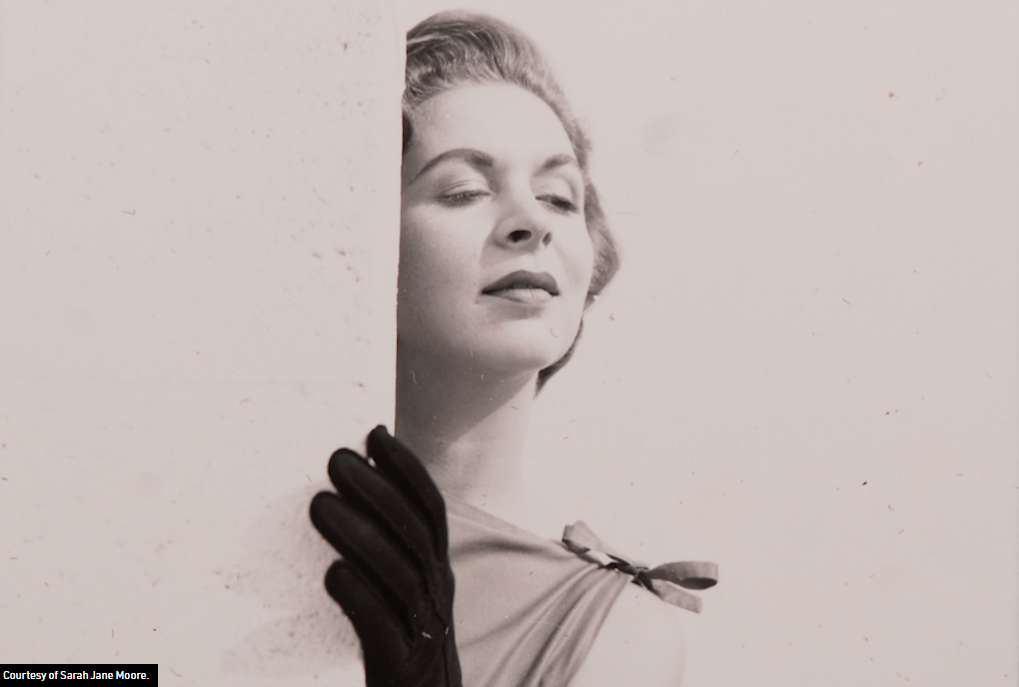(Robinson Devor, USA, 2025, 118 minutes)
"Part of my having a good name on the streets was innocence and stupidity."--Sara Jane Moore on her time as an informant
I'm old enough to remember when Sara Jane Moore tried to assassinate President Gerald R. Ford. I suspect Robinson Devor is, too, but I was so young at the time I forgot all about it almost as soon as it happened.
Moore didn't seem as colorful as Lynette "Squeaky" Fromme, the former Manson Family member who tried the same thing. Both times, Ford emerged unscathed, but Devor's film, written with Bob Fink, Charles Mudede, and Jason Reid, argues that Moore was as colorful. Just not in the same way.
On September 22, 1975 when she secured her place in history, Moore was a 45-year-old single mother living in San Francisco's Mission District after years in West Virginia and Southern California. Unlike Squeaky or Patricia Hearst, circa the Symbionese Liberation Army, she hadn't been involved in terrorist activities or creepy death cults. During her then-three marriages to men of power and influence, she hobnobbed with famous figures, like Patricia's father, Randolph Hearst. She was a member of the Establishment.
At Moore's request, Devor didn't interview anyone else for this documentary. Consequently, the director voices FBI Agent Bertram Worthington (a pseudonym), whose words come from Moore's recollections of their conversations. Notably, Patrick Warburton, star of Devor's fine Charles Willeford adaptation, The Woman Chaser, served as an executive producer. I'm not sure whether it was ever an option, but it seems like a missed opportunity not to use his authoritative voice.
Worthington recruited Moore, because of her connections, which is how she ended up as part of the Hearst inner circle during Patricia's days with the SLA. I'm not certain what she hoped to gain as an informant. A sense of purpose, perhaps? She mentions turning down one particular offer of money, but it's hard to imagine she wasn't receiving regular payment of some kind.
Throughout the film, Moore appears key-lit in isolation, either in the back of a Plymouth Fury overlooking Bernal Heights, through the window of a modernist house, or in the St. Francis Hotel, where Ford was staying on that fateful day. At times, an unseen Devor asks her questions, which brings Errol Morris to mind, though Moore doesn't speak to the camera like the subjects in his films (Devor has cited Morris's Fog of War in interviews).
He provides historical context through archival footage, presented in the boxy Academy ratio, of radical and conservative organizing in the 1970s.
Moore was torn between the two sides. The longer she was involved with the FBI, the more disillusioned she became by their tactics. In talking about these tensions, she becomes tense herself, and repeatedly loses her cool with Devor. Is he talking over her, or is she being stroppy? Possibly a little of both, though it's clear she alternately loves and hates revisiting these times.
As the film goes on, Devor reveals more details about her past as a WAC and aspiring actress known as Sara Kahn, Sara Jane Manning, and other names. She contained multitudes, particularly in light of the rather unflattering statements her mother and first husband made about her.
One of the criticisms leveled against Suburban Fury, since its debut at the New York Film Festival, is that Devor doesn't provide enough information about Moore's background, including her five marriages and four children, three of whom appear to have been taken in by her parents, but she repeatedly insisted to Devor that it wasn't relevant, and wouldn't go into it.
Another criticism is that Devor doesn't indicate whether Moore is lying or not, which is fair, but although it isn't mentioned in the film, he and Bob Fink found no evidence of dishonesty.
Suburban Fury culminates with Moore's description of the day she tried to assassinate the President of the United States of America. It's probably something she's gone over in her head, and with police and reporters, countless times, and she doesn't get especially worked up about it, though I'm not certain what she hoped to accomplish, other than that she intended to succeed–"I was aiming for a head shot because he was probably wearing body armor"--and expected (and possibly wanted) to be killed on site.
Even after watching this entire documentary, I remain mystified by Sara Jane Moore. She states that she was glad Ford didn't die, but doesn't seem regretful, in the film, that she tried to take his life, though she has expressed regret in other interviews, blaming her turn to radical politics.
As for Devor, it's hard to tell what he thinks about her, but that isn't the same as lacking a point of view. It's more about providing a voice for a woman who has felt misrepresented, though that's always a tricky proposition with such a contradictory figure. On the other hand, Devor doesn't try to reconcile those contradictions, and the result is probably as close as anyone can get to understanding what it's like to live inside her head. It's an interesting place to visit--but I wouldn't want to live there.
Gerald Ford would live another 31 years, dying at 93 in 2006. One year later, Moore was released from prison. In 1990, she was immortalized, alongside eight other killers and would-be killers--including Squeaky Fromme--in Stephen Sondheim's Assassins. Over the years, she has been played by everyone from Becky Ann Baker to Christine Baranski. Moore turned 95 this year, but in a manner of speaking, she will never die.
Suburban Fury plays May 23 at the Uptown at 3:30pm. Robinson Devor, Jason Reid, Bob Fink, and co-producer Matt Levinthal will be in attendance. On May 26, SIFF awarded the film the Documentary Competition Grand Jury Prize. I'll update with more showtimes as they become available.
Images from The Hollywood Reporter (Sara Jane Moore in the Plymouth Fury), Film at Lincoln Center (Moore in her acting days), Getty Images / Fox News (Moore on Sept 22, 1975), and Variety (Moore from another angle).





No comments:
Post a Comment